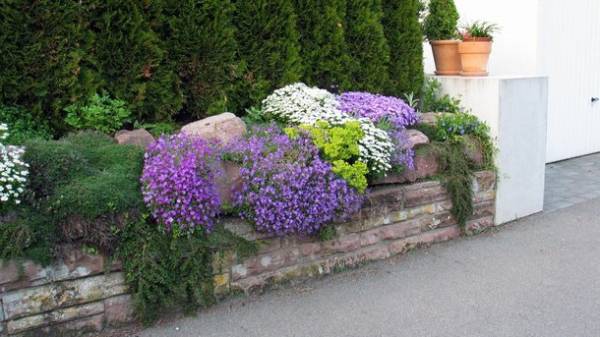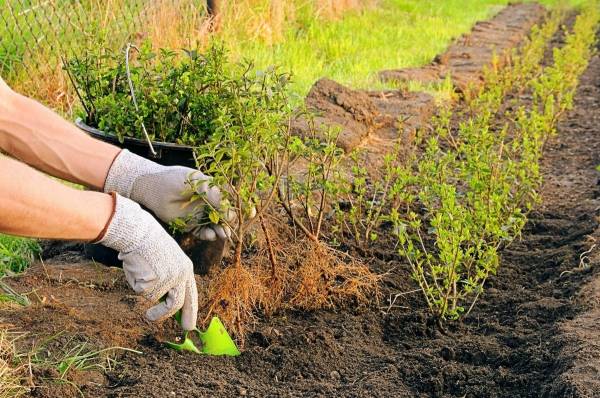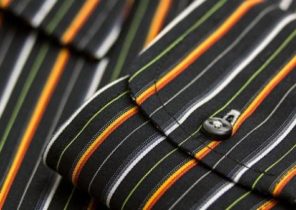
Today, increasingly, for fencing or zoning of land use hedges. Their advantages in comparison with standard fences is undeniable — it is stylish, beautiful and eco-friendly. They create a natural cool in the heat and are an additional source of oxygen. But many gardeners give up the idea to plant them, considering it too troublesome. Or is it really?
About the secrets of the registration of the site with hedges, we were told by the Director of TM “Ukragrotrade” Oleg Shilov and specialist in gardening agriculture Dmitry Panacake.
OPTIONS VARIETIES IN FORM AND FUNCTION
“Hedges can vary depending on tasks to be carried out, — says Oleg Shilov. — Depends on the choice of plants. Usually for hedges using different types of branched shrubs and trees of coniferous or deciduous species. Well for these purposes, suitable evergreen plants are decorative year-round, many tolerate the haircut.”
Important: when planning a hedge, keep in mind that it greatly impoverishes the soil, which can affect nearby crops.
The height of the hedges are divided into:
- curbs (up to 0.5 m);
- actually hedges: low (0.5—1 m), medium (1-1. 5 m), high (1.5—2 m);
- living walls (over 2 metres).
The first and second options are suitable for framing flower beds and the zoning of the site, other options for fencing.
CURBS. For they fit boxwood, honeysuckle and mock orange dwarf barberry, Japanese Spiraea, japonica, mahonia Holm, Potentilla shrubs, miniature roses, dwarf conifers, shrub hyssop. You can use herbaceous perennials — asters or shrub vereskovaya, hosts.
ACTUALLY HEDGES. Here are the ideal candidates will be shade-tolerant slow-growing plants with good branching and a dense crown. If you don’t want to bother with frequent cutting and forming, use of plants, decorative by themselves: flowering, decorative fruit, bright bark. For example, mock orange, English physocarpus, common barberry, Privet, cherry felt, honeysuckle, cotoneaster brilliant, lilac, wild rose, Golden currant, snowberry, white spirea, and common juniper, dogwood, hornbeam, maple, Holly, beech, thuja occidentalis.
This type of fencing is the most popular option in suburban areas, so focus on them in more detail.

Plan. When planting, keep in mind that the fence impoverishes the soil
THE MATERIAL AND FIT
“For hedges take the seedlings with well-branched root system and a well-formed aerial parts: pine suitable age: 3-4 years and deciduous 2-3-year-old seedlings. They are better adapted to adverse conditions, besides their good form, — says Oleg Shilov. — If you decide to create fences of different plants, keep in mind that they should match each other in speed of growth, the nature of the crown, against light, humidity, soil composition”.
WORK. Planting time — April to mid-may, allowed later — for container instances or plants with a lump. If trees or shrubs are grown-up, planting holes are prepared for each plant. They must be such that the roots are not reached bottom and sides 10-15 cm smaller plants are planted in a specially dug trench. The soil should be prepared 20 days before planting.
“The average depth of the trench is 50-60 cm, it is increased on dry, sandy soils and the use of planting material with well-developed root system and reduced in areas with shallow groundwater, — said Dmitry Panacake. — Ditch width for one row of plants should be 50-70 cm If you plan on planting several rows, each row added at 30-40 cm”.
If the groundwater are high, then at the bottom it is necessary to make drainage from the gravel or other material.
Then pour the substrate mixture of topsoil, peat and organic matter — humus, compost (fertilisers should be from 10 to 30%). For the best survival and development of plants in the soil make organic and mineral fertilizers is based on 4-5 kg of organic and 50 g of mineral per 1 sq m of the trench.
PROFILE: MOLDING AND CUTTING
“The cut is supported by the desired profile of transverse and longitudinal cross-section, increased growth of side shoots and the density of the hedge. And all of which increases the protective properties and decorative qualities of a hedge, — explains Dmitry Panacake. In order to obtain the same profile, the haircut carried out using a stretched tape.
Young fence start to cut from the 2nd year of its planting. In each appointment, and remove 1/2—1/3 of the shoot growth. But upon reaching the fence of a given height, the amount of pruning of shoots can be increased to 2/3 of its length, and even more.
A haircut generally carried out 2 times a year. Its terms are limited to the peculiarities of the formation and development of vegetative and floral shoots of plants. Two-the first haircut is carried out before the buds swell or in the fall and the second in mid-summer, after the development of summer shoots (approximately the end of June — beginning of July). The second summer cut, most hardwood species causes profuse emergence and strong growth of shoots from axillary buds. These secondary shoots have time to shaderevent before winter. Cut softwood is best done before the end of shoot growth, about June-July.
With age, when the growth of shoots weakens them pruned to 50% of the value of the annual increment (approximately past 5-6 years). Such pruning promotes dense branching, the leaves become larger, and the crown is thicker.”
CARE: VERSHKI I KORESHKI
“Caring for the ground part and root system, — said Oleg Shilov. — The soil should be regularly mulched, weeded, loosened, watered and fed. Part of the ground sprayed against pests and diseases, carry out forming and sanitary pruning, regular irrigation: fertilizer and growth stimulants dissolved in water intended for irrigation.
Good stimulant is the IAA. For hedges consisting of shrubs, is recommended as 0.002% solution at the rate of 5 l per 1 plant. For hedges of trees — 0,004% solution at the rate of 30 l/1 plant. In the first year after planting, fertilizing produce up to 10 times per season. In the second year, apply nitrogen fertilizer (urea 1 g/1 l water, 0,2% solution of ammonium nitrate), and later — 0,5% solution of superphosphate, a 0.4% solution of potassium chloride or a solution of complete fertilizers.”







